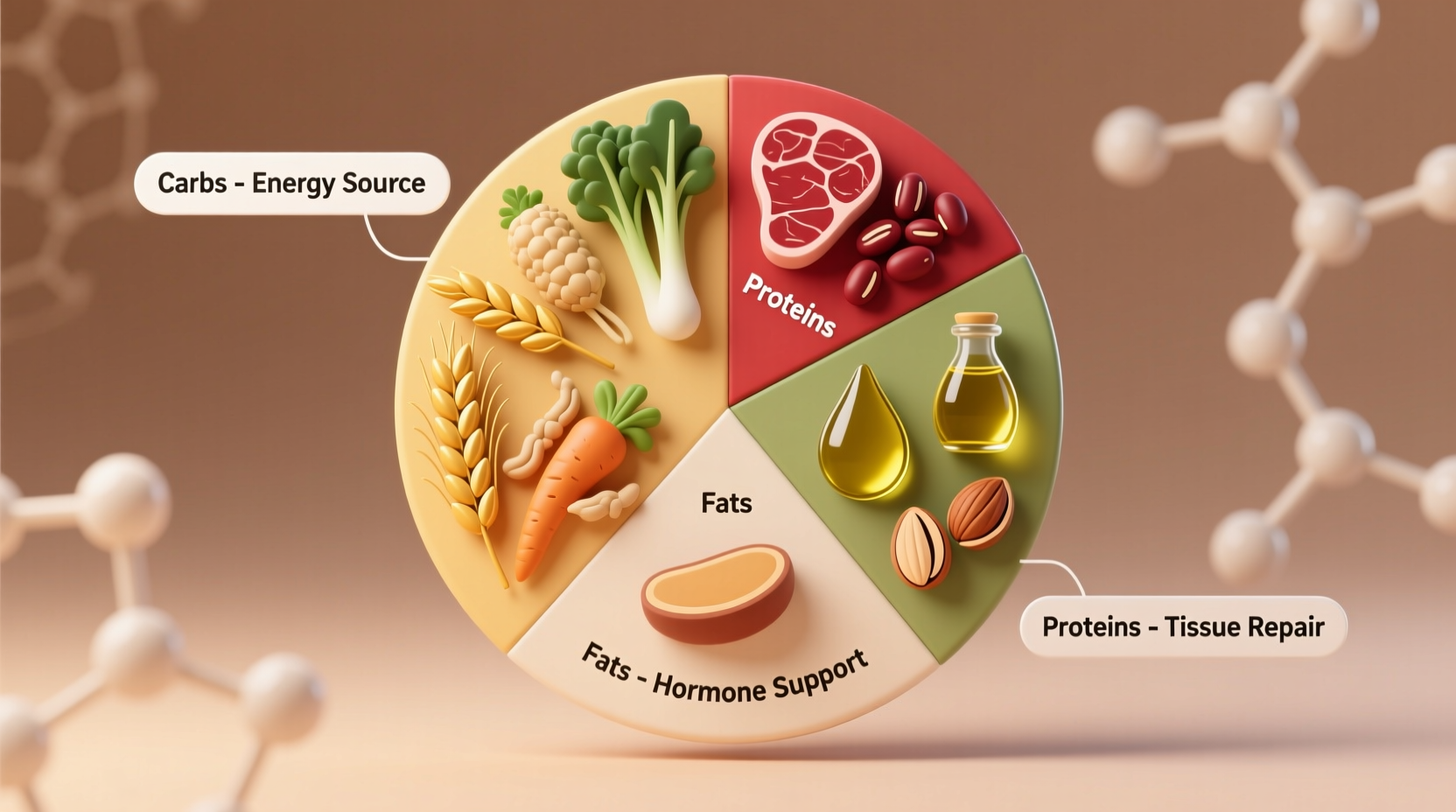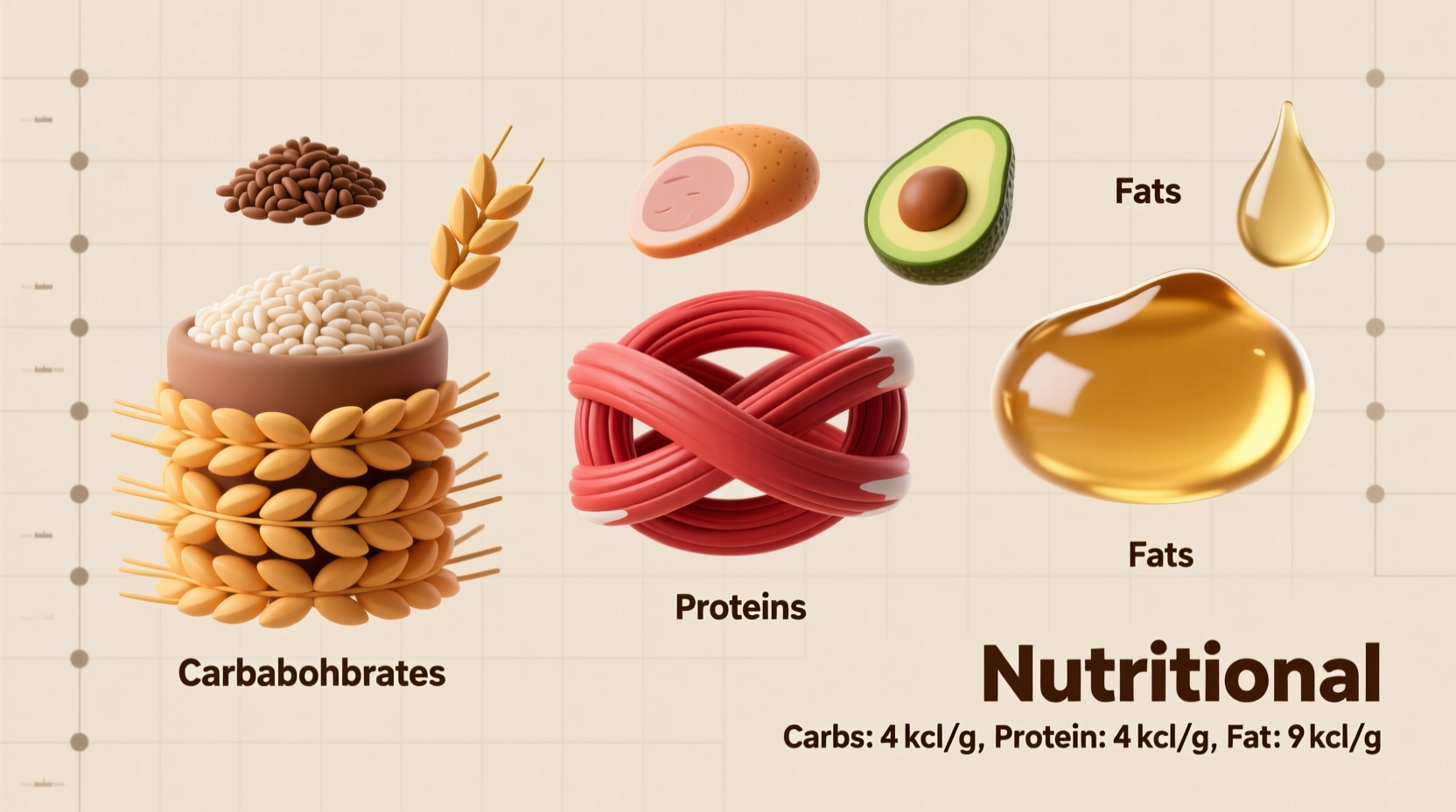Your Complete Guide to Understanding Food Macros
When you hear fitness enthusiasts or nutritionists talk about "tracking macros," they're referring to monitoring your daily intake of carbohydrates, proteins, and fats. Unlike micronutrients (vitamins and minerals), macronutrients provide calories and form the foundation of your diet. This guide explains exactly what food macros are, why they matter, and how to use this knowledge to improve your nutrition strategy.
Breaking Down the Big Three: What Each Macro Does
Each macronutrient serves unique physiological functions beyond just providing energy. Understanding these roles helps explain why balanced intake matters more than simply counting calories.
Carbohydrates: Your Body's Preferred Energy Source
Carbohydrates break down into glucose, which powers your brain, muscles, and central nervous system. Contrary to popular diet trends, carbs aren't inherently "bad"—they're essential for optimal functioning. The key difference lies between:
- Complex carbohydrates: Whole grains, vegetables, legumes (provide sustained energy)
- Simple carbohydrates: Sugars, refined grains (cause blood sugar spikes)
According to the Dietary Guidelines for Americans, carbohydrates should comprise 45-65% of your daily calories. One gram of carbohydrates provides 4 calories of energy.
Proteins: The Building Blocks of Your Body
Proteins consist of amino acids that repair tissues, build muscle, and create enzymes and hormones. Your body can produce some amino acids, but nine are "essential" and must come from food. Complete proteins (containing all essential amino acids) typically come from animal sources, while plant-based proteins often require combining different foods.
The National Academy of Medicine recommends protein make up 10-35% of daily calories. Like carbs, protein provides 4 calories per gram. Active individuals and older adults often benefit from higher protein intake to maintain muscle mass.

Fats: Essential for Hormone Production and Nutrient Absorption
Fats have been unfairly demonized—they're crucial for absorbing fat-soluble vitamins (A, D, E, K), protecting organs, and maintaining cell membranes. Not all fats are equal:
- Unsaturated fats: Avocados, nuts, olive oil (heart-healthy)
- Saturated fats: Animal products, coconut oil (consume in moderation)
- Trans fats: Processed foods (avoid completely)
Fats should constitute 20-35% of daily calories according to the American Heart Association. At 9 calories per gram, fats are more energy-dense than carbs or protein.
| Macronutrient | Calories per Gram | Primary Functions | Recommended Daily Intake |
|---|---|---|---|
| Carbohydrates | 4 | Energy production, brain function | 45-65% of total calories |
| Protein | 4 | Tissue repair, enzyme production | 10-35% of total calories |
| Fats | 9 | Hormone regulation, vitamin absorption | 20-35% of total calories |
When Macro Tracking Actually Matters (And When It Doesn't)
While counting food macros can be beneficial for specific goals, it's not necessary for everyone. Understanding these context boundaries helps determine if macro tracking aligns with your needs:
- Most beneficial for: Athletes optimizing performance, individuals with specific body composition goals, people managing certain medical conditions
- Less critical for: General health maintenance, intuitive eating approaches, those with disordered eating history
The Academy of Nutrition and Dietetics emphasizes that for most people, focusing on whole food sources of each macronutrient provides sufficient nutritional balance without meticulous tracking. As registered dietitian Melissa Majumdar explains, "Food quality matters more than precise macro ratios for the average healthy adult."
Calculating Your Personal Macro Needs
Your ideal macro distribution depends on several factors including age, sex, activity level, and health goals. Here's how to estimate your needs:
- Determine your total daily calorie needs using an online calculator or consulting a professional
- Choose appropriate macro percentages based on your goals (e.g., 40% carbs, 30% protein, 30% fat for active individuals)
- Convert to grams: (Total calories × percentage) ÷ calories per gram
For example, a 2,000-calorie diet with 50% carbs, 25% protein, and 25% fat would be:
- Carbs: (2,000 × 0.50) ÷ 4 = 250g
- Protein: (2,000 × 0.25) ÷ 4 = 125g
- Fats: (2,000 × 0.25) ÷ 9 = 56g
Remember that these are starting points—adjust based on how you feel, your energy levels, and progress toward your goals. The National Institutes of Health notes that individual responses to different macro distributions can vary significantly based on genetics and metabolic health.
Common Food Macro Misconceptions
Nutrition misinformation abounds when it comes to macronutrients. Let's clarify some frequent misunderstandings:
- "All carbs are bad": Complex carbohydrates from whole foods provide essential fiber and nutrients
- "High protein damages kidneys": Research shows high protein intake is safe for healthy kidneys (National Kidney Foundation)
- "Fat makes you fat": Excess calories from any macro cause weight gain, not fat specifically
- "You must eat exactly 40/30/30": Optimal ratios vary by individual—flexibility matters
Registered dietitians increasingly emphasize that food synergy—the interaction between different nutrients in whole foods—matters more than isolated macro counting for long-term health.
Putting Macro Knowledge Into Practice
Understanding food macros transforms how you approach meals. Instead of restrictive dieting, you can create balanced plates that satisfy both nutritional needs and taste preferences. Try this simple framework for meal planning:
- Protein source: Chicken, fish, tofu, or legumes (palm-sized portion)
- Complex carbohydrate: Quinoa, sweet potato, or whole grains (fist-sized portion)
- Healthy fat: Avocado, olive oil, or nuts (thumb-sized portion)
- Non-starchy vegetables: Fill half your plate with colorful options
This approach naturally balances your macros without requiring constant calculation. For those interested in more precise tracking, numerous free apps like Cronometer or MyFitnessPal can help monitor your daily intake against personalized goals.
When to Consult a Professional
While understanding food macros provides valuable nutritional insight, certain situations warrant professional guidance:
- Managing diabetes or other metabolic conditions
- Significant athletic performance goals
- History of disordered eating
- Medical conditions affecting nutrient absorption
Certified nutrition specialists can provide personalized macro recommendations based on comprehensive health assessments, moving beyond generic formulas to address your unique physiological needs.











 浙公网安备
33010002000092号
浙公网安备
33010002000092号 浙B2-20120091-4
浙B2-20120091-4